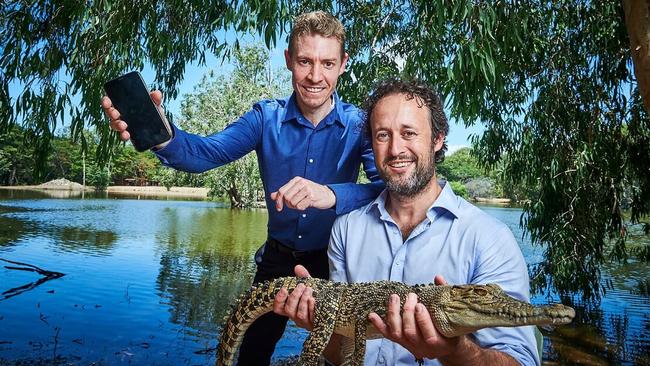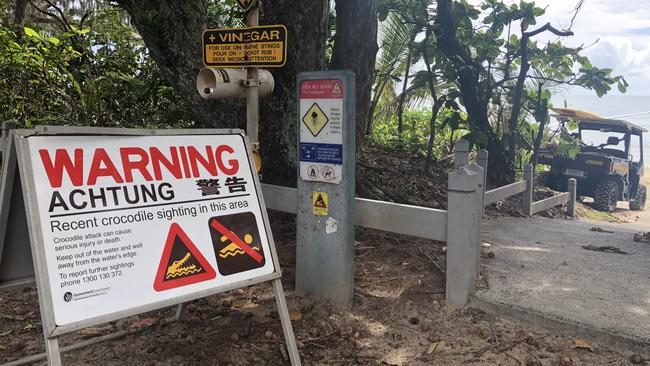Warning – rain to trigger Crocodile nesting and breeding season
Experts say weather influences crocodile behaviour and rain can trigger females into nesting and breeding.

Gladstone
Don't miss out on the headlines from Gladstone. Followed categories will be added to My News.
Predicted rain is set to send frisky female crocodiles into a nesting frenzy prompting warnings for the public to be vigilant around waterways this summer holidays.
Two of the dangerous prehistoric reptiles have been captured in the past month in the Fitzroy River at Rockhampton by the Department of Environment and Science DES.
The DES crocodile sightings dashboard shows 99 recorded sightings in the past 30 days in Queensland from Hervey Bay to Cape York.
Following rain earlier this week, Koorana Crocodile Farm was a hive of activity.
Owner John Lever said the rain triggers the females into nesting behaviour.
“The other night we had 20 millimetres of rain and we had 12 nests started that night,” Mr Lever said.
“12 nests in response to 20 millimetres of rain.”
When La Nina was announced to deliver increased rain to eastern Australia during spring, experts predicted and active crocodile breeding and nesting season.
Zoologist Dr Adam Britton told media at the time different weather elements had complex relationships with crocodiles.
“Rain and humidity triggers crocodile courtship and nesting behaviour,” he said.
“It’s like a little switch that goes off in their brains when rain falls and triggers females to start building the nest.”

Dr Britton said the increased nesting activity could result in more babies being born this breeding season.
The warning coincides with the discovery of a new crocodile species dubbed ‘Swamp King’, after fossils were discovered by University of Queensland researchers near Chinchilla.
The Paludirex vincenti was a huge prehistoric reptile that exceeded five metres in length and dominated southeast Queensland waterways between 5.33 and 2.58 million years ago, said UQ PHD researcher Jorgo Ristevski.
Named after Geoff Vincent, who found a fossilised skull of the animal, “Paludirex” means swamp king in Latin and “vincenti” honours Vincent.
“The ‘swamp king’ was one intimidating croc,” Mr Ristevski said.
“Its fossilised skull measures around 65 centimetres, so we estimate Paludirex vincenti was at least five meters long.
“But Paludirex had a broader, more heavy-set skull so it would’ve resembled an Indo-Pacific crocodile on steroids.”
Today, the Crocodylus porosus and Crocodylus johnstoni, are the two species that live in Australia.
Researchers are working to discover why Paludirex vincenti died out.
The DES recently released the QWildlife app that enables people to instantly report crocodile sightings and locations.
For more information on the QWildlife app visit the website.
More stories,
Full body scanners installed at Gladstone airport


